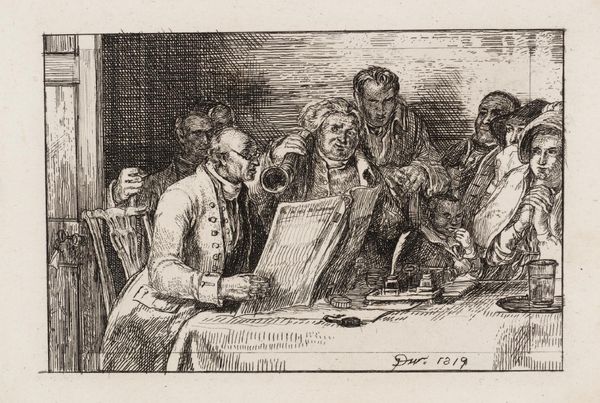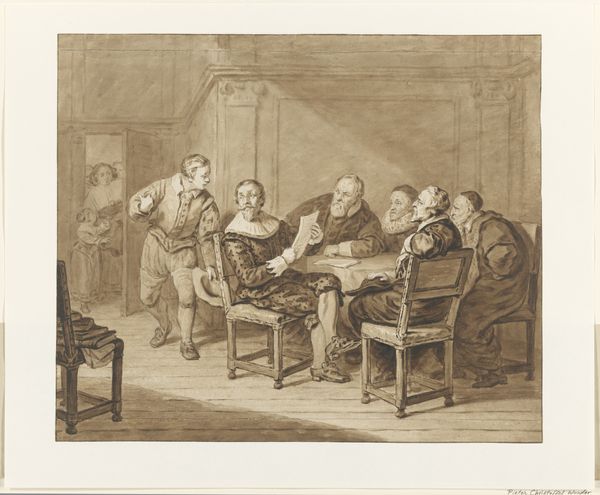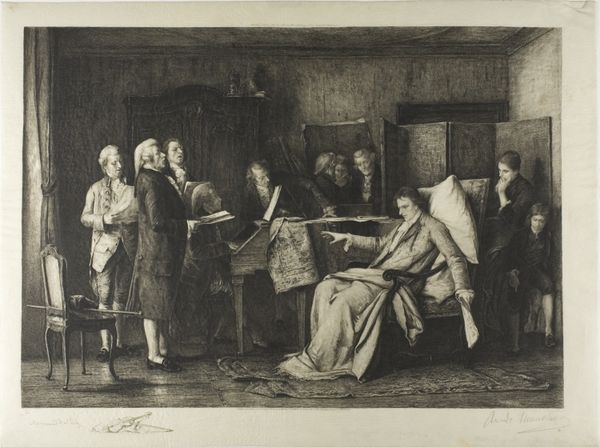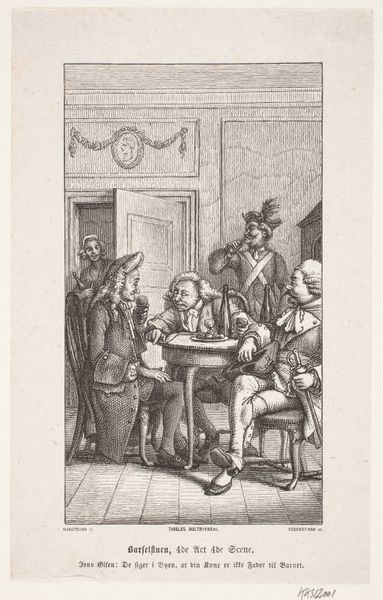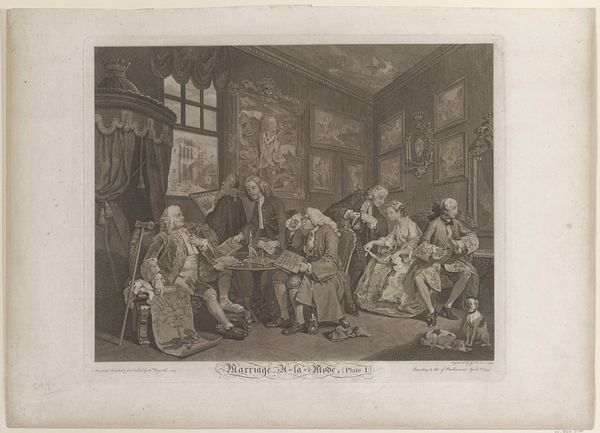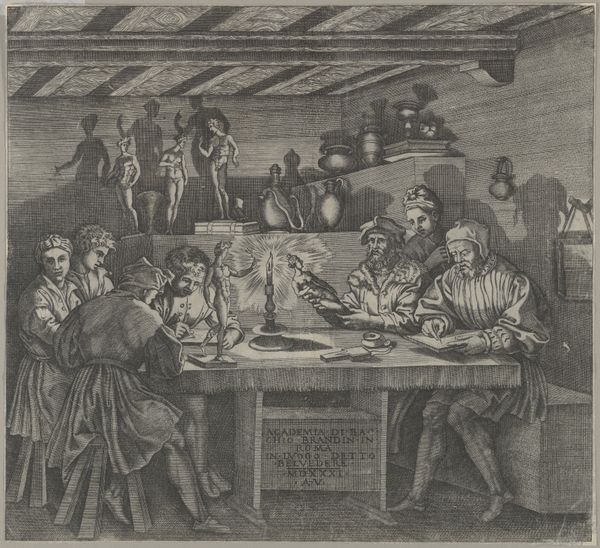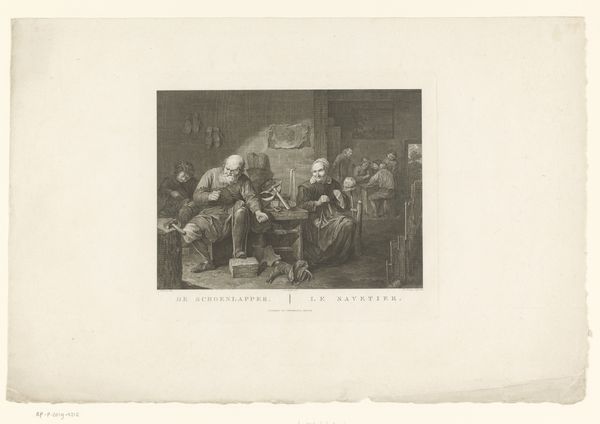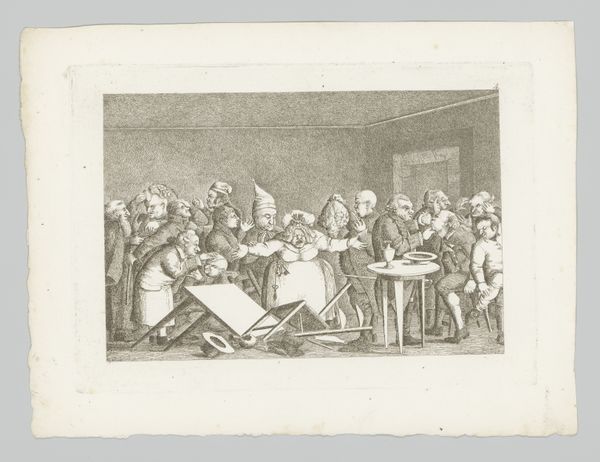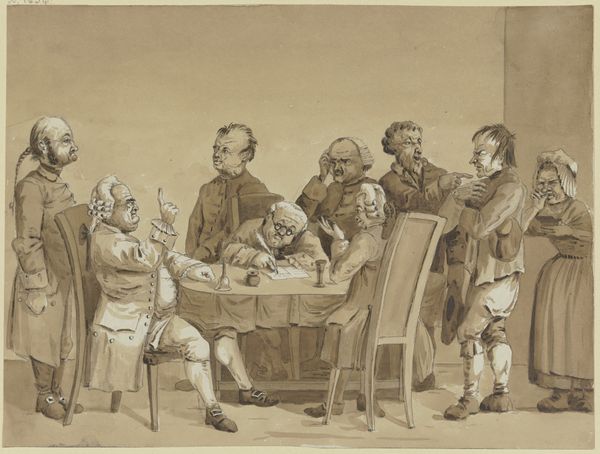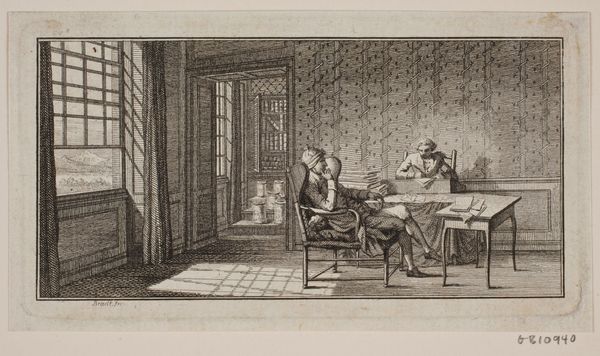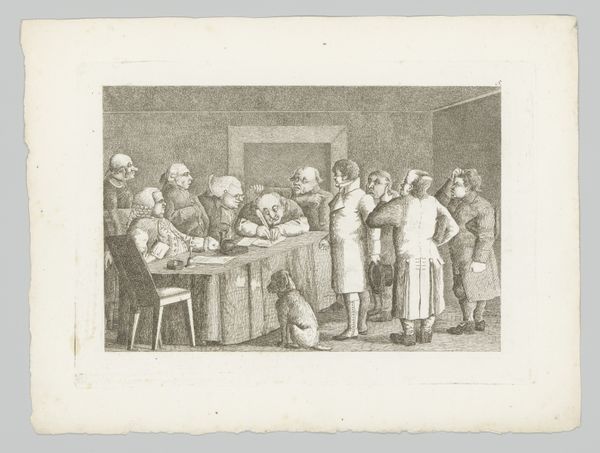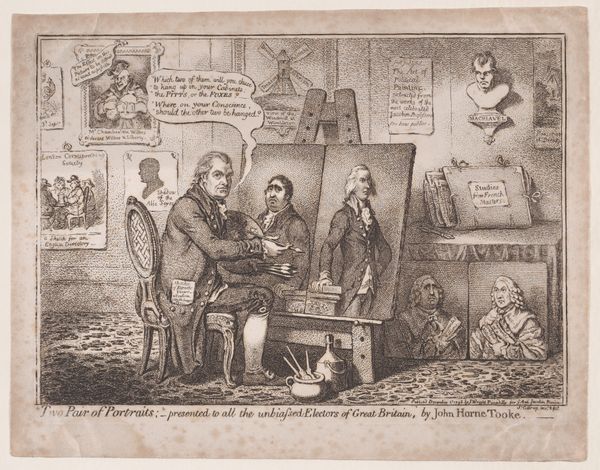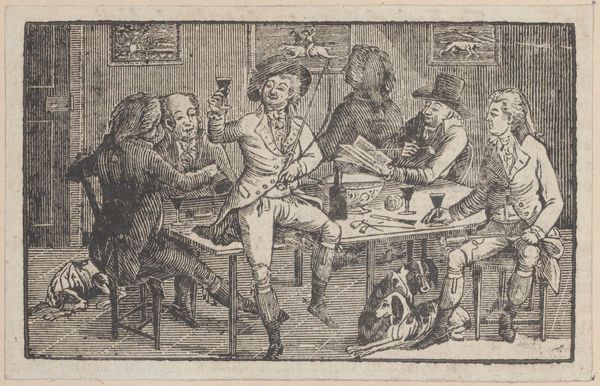
print, engraving
#
narrative-art
# print
#
charcoal drawing
#
figuration
#
19th century
#
genre-painting
#
history-painting
#
engraving
Dimensions: plate: 9.1 x 12.6 cm (3 9/16 x 4 15/16 in.) page size: 44.5 x 29.9 cm (17 1/2 x 11 3/4 in.)
Copyright: National Gallery of Art: CC0 1.0
Curator: Before us is "Reading the Will" an engraving completed by Sir David Wilkie in 1819. I am struck immediately by its intense atmosphere and compressed interior, filled with intently listening figures. What grabs your attention initially? Editor: My eyes are drawn to the way the light describes the materiality here – the heavy linen of the table covering, the glassware, the different textures of clothing and skin. You get such a feeling for the surfaces depicted. Curator: Indeed. Note how the tonal range, though narrow in this monochrome print, masterfully models form and conveys emotional nuance. The artist utilizes compositional strategies of the 19th-century narrative genre in creating multiple psychological studies amongst these characters as they react to news. The formal grouping and figure arrangement construct an eloquent representation of their relationships. Editor: And what relationships they are. There’s avarice and calculation jostling with concern and apprehension, but it’s all filtered through the social conventions of the time. I think Wilkie is really capturing that dance of emotion against constraint in the material world. The way fortunes, labor and inheritance affect character, for example. You see the artist really grapple with how social strata influenced production, exchange, and perhaps here, inheritance. Curator: A point well taken. Further, considering the techniques required to create this, the engraving process itself speaks to this complexity, no? The intricate, repetitive actions carve narrative, both in the image and the artistic labor. It has visual clarity. Editor: Definitely. Engraving in its nature involves such a time investment and such skill. That is evident. When you contemplate how this type of art object then became a tradeable object—a printed reproduction circulated widely in its day and collected among middle classes—it is interesting how production shaped how people experienced the visual world in 1819. Curator: Precisely. "Reading the Will" exemplifies Wilkie's command of pictorial space and his sensitivity to psychological depth. The meticulous handling of the linear elements produces an organized emotional structure as we consider how its visuality contributes to meaning. Editor: And ultimately reminds us that art isn't born in a vacuum—but through skillful action is rooted deeply in materiality and society. I leave this print with thoughts about how people affect these fortunes portrayed. Curator: Yes, leaving me considering the structured artistic creation as it reflects human experience.
Comments
No comments
Be the first to comment and join the conversation on the ultimate creative platform.
